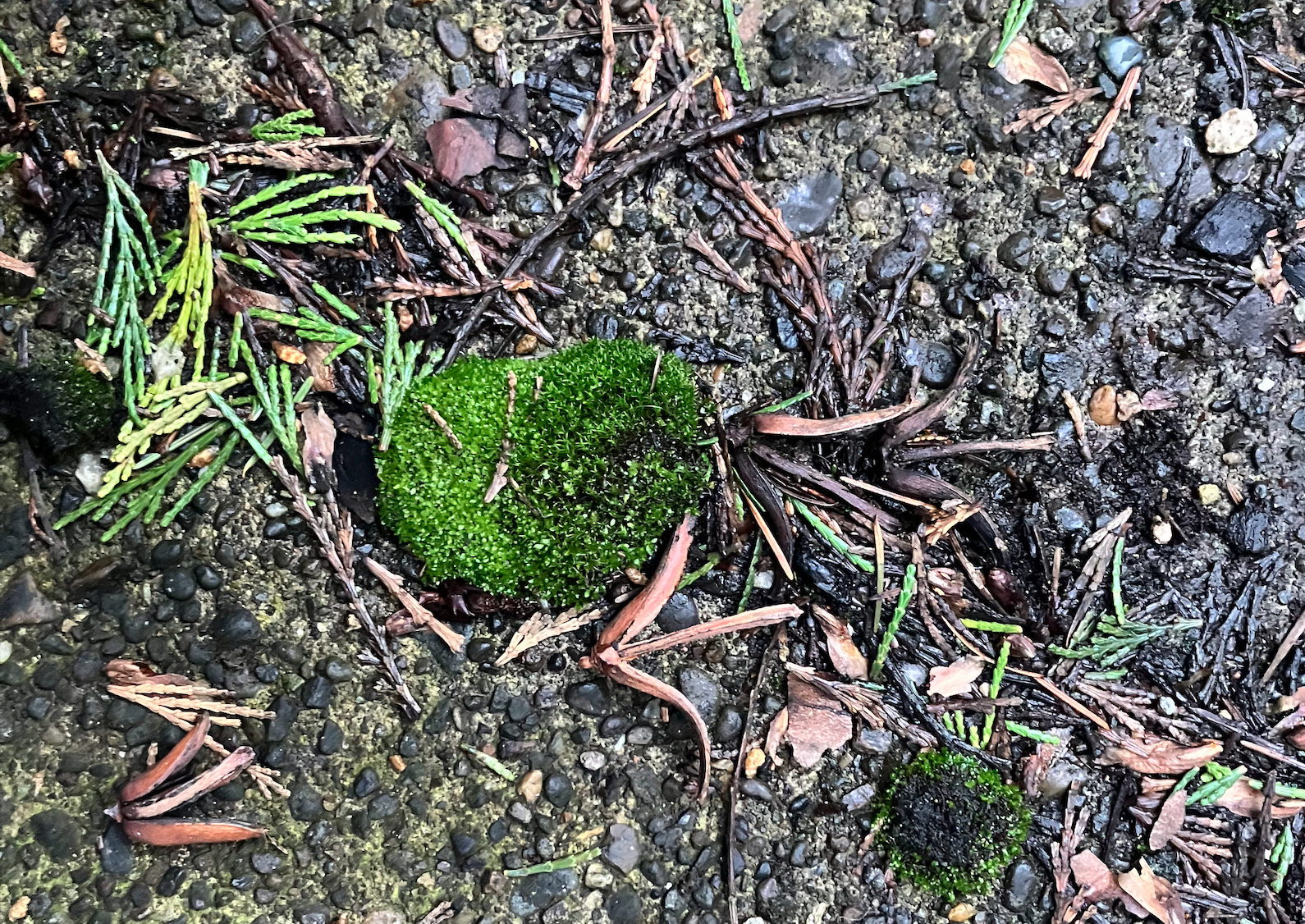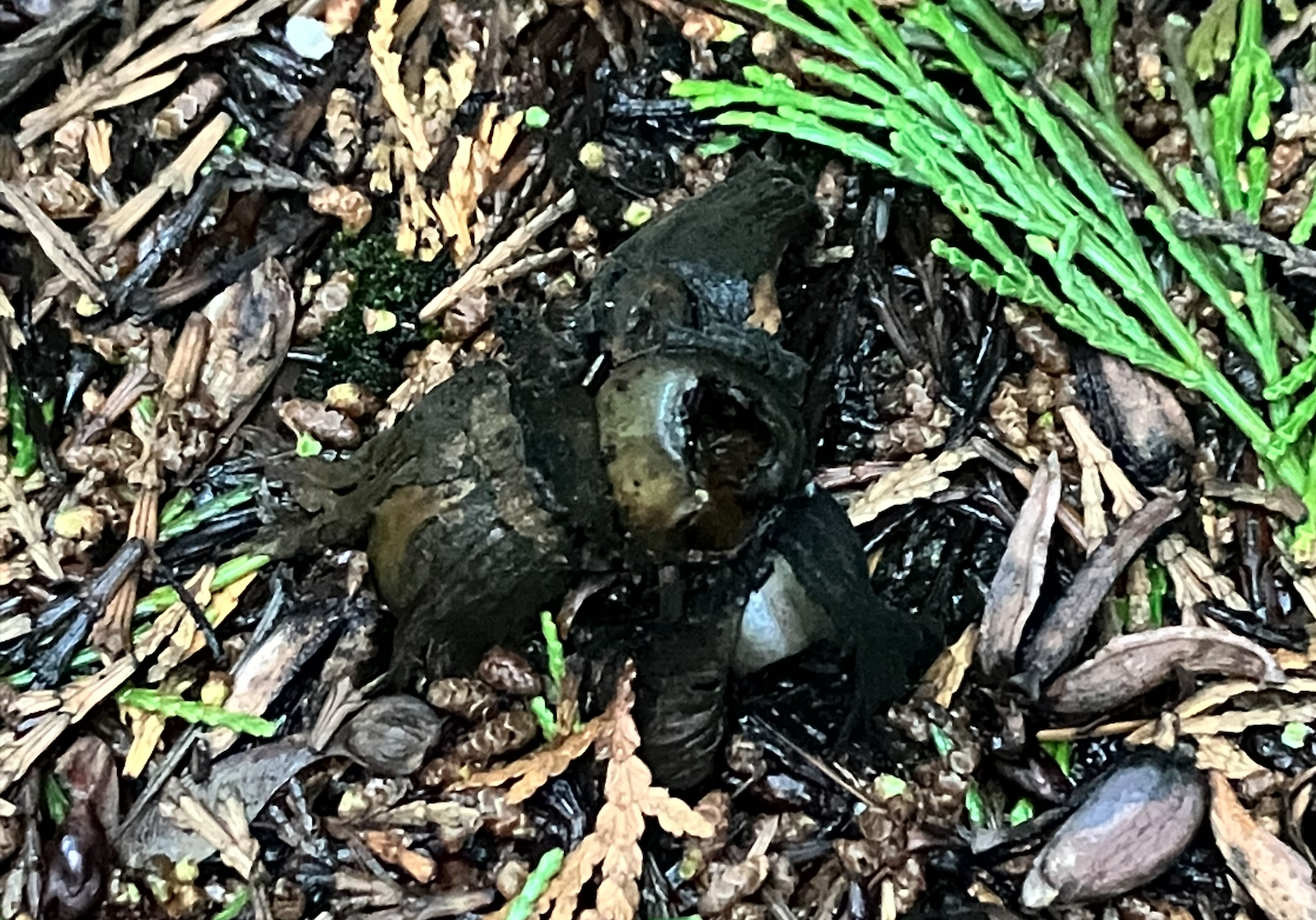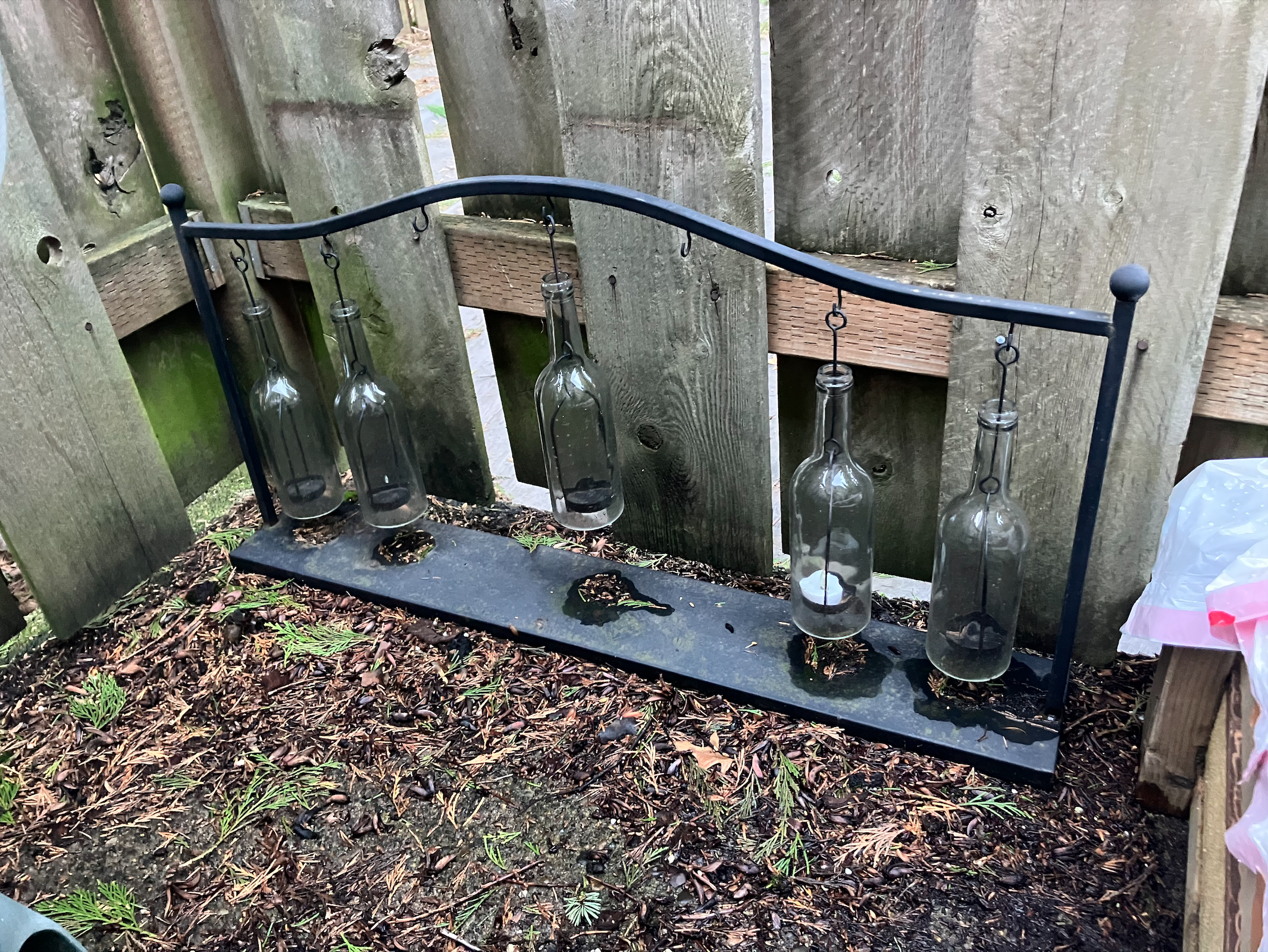Leaf's Blog
HomeFebruary 10, 2023
I sat on my patio for the first time in a while today, and since I've been out here, a number of things have changed.
It's February, and I live under some evergreen trees. They drop pine needles, and I'm enamored with these dark green leaves.
I didn't want them to wash away in the rain just to be thrown in my neighbors yard waste bin, so I collected them, at least the big ones.

I only know what I learned in elementary school, which is that when leaves fall, they decay and become nutrients for the soil, which go on to help the trees and other plants. What is the equivalent of that when you have a paved outdoor patio? should I just compost them? Do they fill some sort of role in the environment? Should I walk them to the nearest park or natural area and let them decay like they would if they hadn't landed on my patio?
A quick search tells me they are likely cedar trees. Maybe later I'll spend some more time on figuring out if they are good for tea, or any other purposes.
I've also noticed some luscious moss growing.

It's very soft.
I'm not sure what to do on this patio. After spending some time apart, and now sitting with it again, I am realizing I was thinking too much of this space as "my patio," which in turn elevated some pressure I was feeling to make it a beautiful hangout spot, or a container garden, or any number of tiktok-able projects. Yesterday, I went to close a bucket shut, and my hang almost slammed down on a medium-sized bug (some sort of beetle I think) and I realized how my carelessness had almost squished a bug that I certainly didn't want squished on my hands. This was its home, and I was sharing it. This isn't "my" patio; it's a space I share. Not only with my partner, but with any creature, plant, or being that might use this space, or whose home "my" patio is now paved over.
I think this reframing of thought will help me better take care of this space.
Productivity culture had unknowingly convinced me I needed to have a productive garden - maximizing sunlight to grow as many vegetables as possible in every season that could grow a vegetable. I was able to grow a small bok choy that became a lovely dinner for a squirrel and a garlic bulb we threw in our front planter that sprouted but we were afraid to try and eat because I poured a bunch of leachate into that planter to give it more moisture and nutrients. It worked for the planter, but I'm unsure if compost leachate has bad bacteria that we shouldn't be eating crops from....
I was biting off more than I could chew with my many "gardening" projects. This time, I just want to fill as many containers with as much soil as I can get my hands on, and throw some native pollinators in the planters and let them do their thing. We have some yarrow in the front that has been doing great, but the back patio doesn't get as much sun as the front planter, so I'll have to see what will do well in the shade. If I can even help one bee or butterfly by trying to plant things here it will be time well spent. Maybe someday I'll grow patio container potatoes or try again with a bok choy covered with a net this time, but for now, baby steps.
My first thought is some squirrel and bird feeders. I think a squirrel may have buried some nuts for winter in one of our buckets with potting soil that isn't growing anything. And I see birds on the fence all the time.
Speaking of squirrels, I found these. Upon being poked with a stick, it was firm and did not fall apart. They look hollow. Not doodoo then?? Nuts?

The only project that is a true priority is our compost. I am inexperienced, and became quickly overwhelmed. I read some advice online that lead me to put a large bin into a slightly larger bin, the smaller one with air holes drilled in for circulation, and the larger one to collect runoff leachate.
Well, because it rains here, it quickly filled up with water and was swimming with dead maggots.
We drained it and stirred it, added some brown stuff, and took it out of the larger bin. It doesn't seem to drain or run off too much, but I try to keep it covered with a tarp so it doesn't get as waterlogged as before, but I do worry about runoff into my neighbor's yard.
Anyway, it's way too full for me to add the brown stuff it now desperately needs. Last time I moved it, there were a bunch of pink worms underneath, crawling in and out of the holes.
I think it would be best to just dump the whole deal into a large standard trash can, so I could turn it and roll it to get airation. If I do this, should I completely close it off and let it decompose anaerobically? Or drill holes into the trash can and line them with mesh so nothing leaks out? What about the worms? If I trap them in with the compost in a closed trash can, will they survive and multiply in that environment, or will they die and become part of the compost?
I feel out of my depth, and regretful I let it go this far. But this is why I need to set up systems when I'm not as depressed to work for me when I am depressed, so I don't leave wet living projects in a 20 gallon bin out on the patio and ignore it for months at a time when it becomes overwhelming!
Let's hope I can clean this place up before spring when we can start hanging our laundry outside again.
